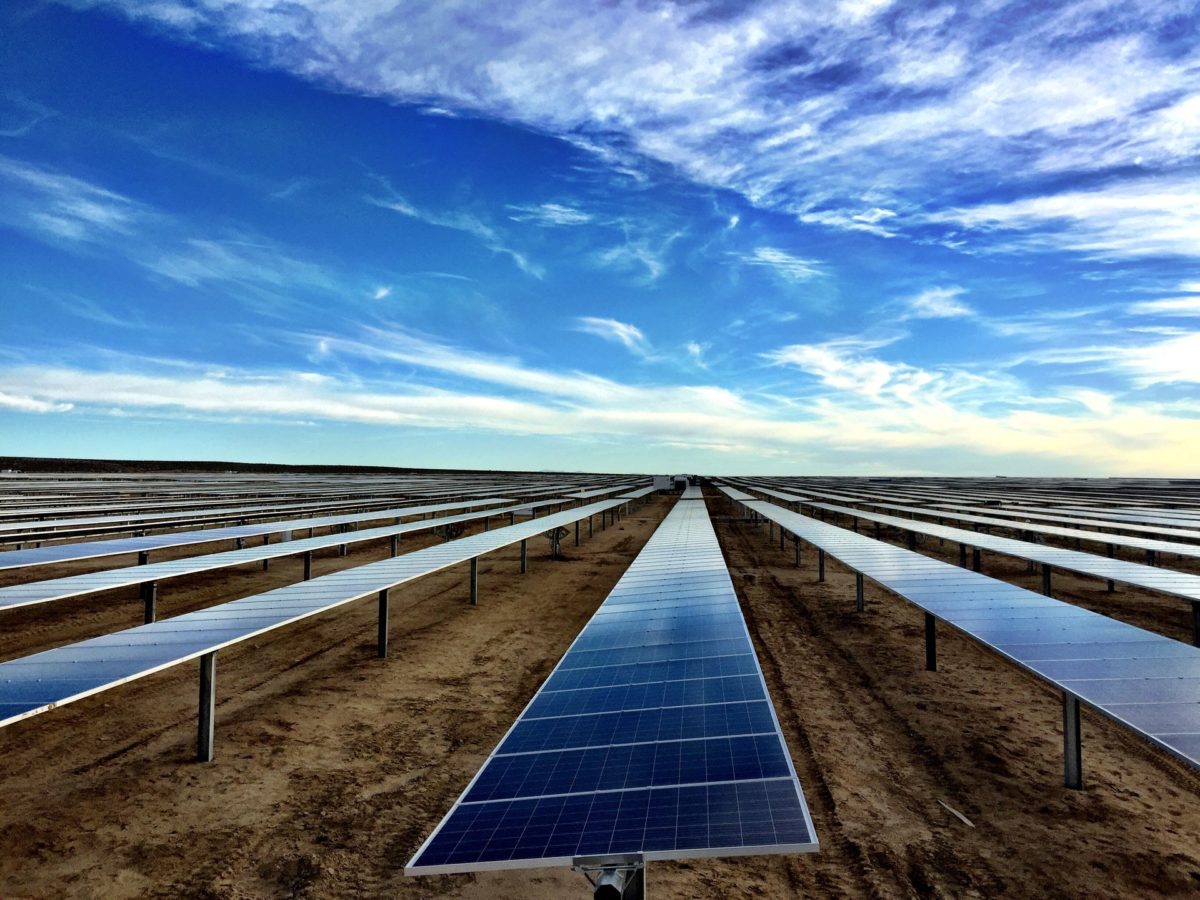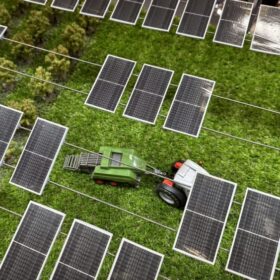The Department of Energy’s (DOE) Energy Information Administration (EIA) is projecting that wind and solar power will be the fastest growing sources of utility-scale electricity generation in the United States for the next two years. EIA forecasts that this will occur while the electricity market for the United States as a whole contracts by as much as 2% in 2019, and “shows very little growth” in 2020.
It is projected that electricity generation by utility scale solar power will grow by 10% in 2019, and by 17% in 2020. Wind generation is projected to grow by 12% and 14% in those two years.

Utility scale solar power installation capacities are projected at 4 GWac in 2019, and 6 GWac in 2020.
About 11 GWac of wind capacity is scheduled to come online in 2019, the largest volume of new capacity installed since 2012. An additional 8 GW of wind capacity is scheduled to come online in 2020. The share of total U.S. generation from wind is projected to increase from 7% in 2018 to 9% in 2020, which would move wind permanently past hydroelectricity as the largest source of renewable energy in the nation.
Additionally, per a Twitter analysis by John Raymond Hanger, if coal’s precipitous fall continues – sometime around 2022 renewables could exceed coal. In this case, renewables will include hydroelectricity plus biomass, some forms of which have controversial environmental impacts.
Renewable electricity could exceed coal electricity by 2022! EIA forecasts coal will fall to 24% by 2020, down from 27% in 2018. Wind and solar are booming. If current trends continue through 2022, renewables could exceed coal electricity by 2022! https://t.co/588Ek4SnHD pic.twitter.com/UtG1zvqOCz
— John Raymond Hanger (@johnrhanger) January 18, 2019
When adding together all CO2-free energy sources – nuclear, wind, solar, hydro, and other renewables – in 2020 the United States is forecast to get 38% of its electricity from clean sources. This will be larger than natural gas’ 37% of market share, and be far above coal at 24%, but of course still far behind these two fossil fuel sources combined.

Important to note here that none of the above numbers include residential and business solar power installations. In the EIA’s 2018 midyear numbers, solar generated electricity represented 2.4% of all electricity consumed. Whereas, the EIA projects that the utility scale growth above will just break 2% of all electricity from large power plants in 2020.
The EIA projects that almost 9 GWac of distributed solar will be installed over the next two years, almost as much as the 10 GWac of of utility scale that is projected to be installed. This growth of small-scale solar will be even faster than the 32% utility scale growth, at 44% over two years.
If you include the contributions of distributed solar, all solar power will be in excess of 3% of all electricity at the end of 2020. Combined with wind, the pair should will break 10% easily in 2019, and be greater than 12% at the end of 2020.
This content is protected by copyright and may not be reused. If you want to cooperate with us and would like to reuse some of our content, please contact: editors@pv-magazine.com.








As usual EIA undercuts real life and excluding business, home is a lot of solar.
Nor does it count CHP well which at 8% of US generation and 8% of capacity, a good part of which of which is RE from farms, ranches, factories, etc.
Nor is the heating part counted.
Once Chump’s tariffs wind down with the great price drops of the last yr and more coming in panels, inverters, BoS, home, building, business installs in the US are going to rocket like they are around the world, especially when competing against diesel, PV is a no brainer at 10- 30% of the cost.
I’ve always for 40+ yrs now beat diesel generation with wind or tidal I use to produce. It’s not hard.